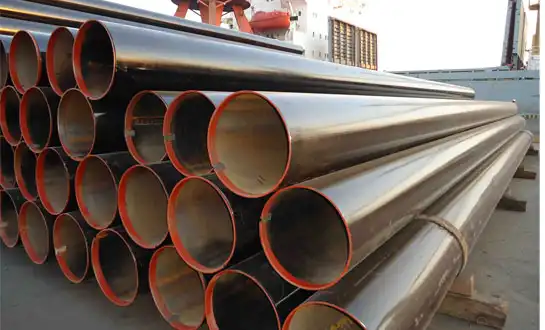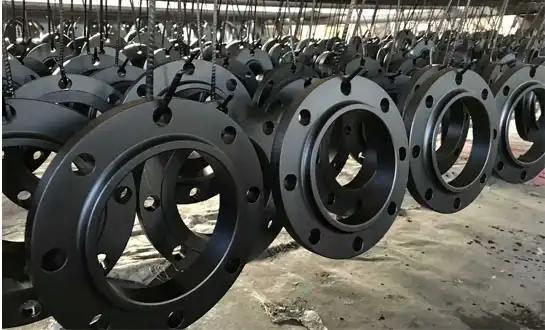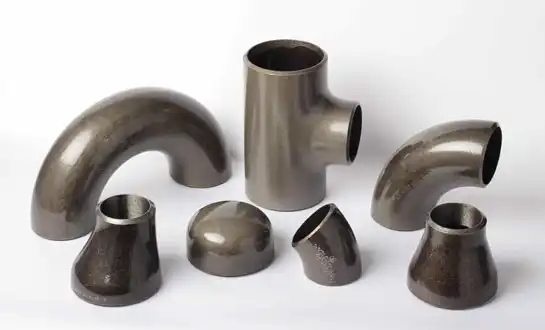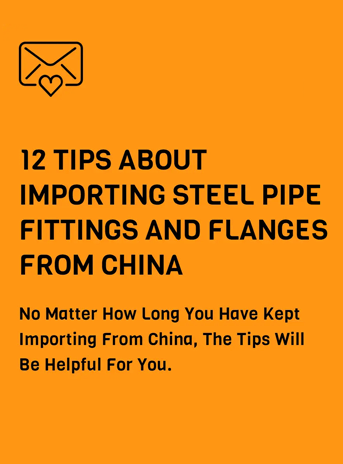Why Custom Angle Pipe Bends Are Essential in Complex Piping Layouts?
Angle pipe turns made to order are a big part of industrial pipe systems these days. They fix issues that happen in complicated building plans where regular parts can't work because of limited room, the way equipment is set up, or the needs of the process flow. Unlike conventional 45-degree or 90-degree elbows available off-the-shelf, custom angle pipe bends are manufactured to precise specifications matching exact angular requirements, enabling engineers to route piping systems through confined spaces, around obstacles, and between equipment connections without compromising flow efficiency or structural integrity. These specialty fittings do away with the need for numerous regular elbows linked in series. Low pressure, a lot of places where leaks could happen, and trouble installing in high-tech offices are all cut down by this. It can still handle the complicated shapes that are popular there.
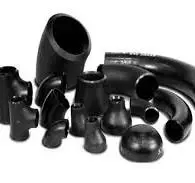
Technical Advantages of Custom Angle Pipe Bends in System Design
Optimizing Flow Dynamics and Reducing Pressure Loss
Custom angle pipe bends provide significant hydraulic advantages over alternative routing methods by minimizing turbulence and pressure drops that occur when fluids navigate directional changes in piping systems. Standard practice of combining multiple elbows to achieve non-standard angles creates additional flow disturbances at each connection point, with turbulence intensifying as fluid velocity increases through process lines. Every time you change direction, you lose energy based on how sharp the shift is and how many times it happens. This has an immediate effect on the cost of pumps and makes the system work less well. Custom angle pipe bends manufactured with appropriate bend radii maintain smoother flow patterns, distributing directional change gradually across the fitting's arc rather than forcing abrupt transitions that generate vortices. Engineers calculating pressure drop for piping networks recognize that a single custom angle pipe bend with optimized geometry produces substantially lower friction losses compared to multiple standard fittings arranged to approximate the same directional change. You can pick the bend radius-to-diameter ratio that works best for the service based on how it will be used, combining the need for room with the need for hydraulic performance.
Structural Integrity and Space Optimization
The structural advantages of custom angle pipe bends extend beyond simple geometric accommodation to encompass superior stress management in piping systems subjected to thermal expansion, mechanical loads, and pressure fluctuations. Standard elbows connected with short pipe sections create stress concentration points at each weld joint and geometric discontinuity, weakening the overall system. Custom angle pipe bends eliminate intermediate welds and geometric transitions, distributing stresses more uniformly across continuous material without abrupt changes. In high-temperature situations where different thermal expansion causes big pressures, this structure consistency is important. Manufacturing custom angle pipe bends through induction bending or hot forming maintains consistent wall thickness around the bend profile, avoiding thinning that occurs on sharp bends. Custom angle pipe bends also enable engineers to maximize usable space within industrial facilities by eliminating the physical volume occupied by multiple standard fittings, support structures, and clearance requirements. Better efficiency in installation Cut down on the amount of welds and the problems that come up while putting together various parts to save time and money on construction.
Material Selection and Quality Control
Material selection for custom angle pipe bends must address service conditions including operating temperature, pressure, corrosive environment characteristics, and mechanical loading. Carbon steel grades serve general purpose applications where moderate temperatures and non-corrosive fluids permit economical material choices. Elevated temperature services require chrome-molybdenum alloy steels which maintain strength and resist creep deformation at temperatures reaching 1100°F. Corrosive environments demand stainless steel grades or nickel-based alloys for extremely aggressive services. Heat treatment of custom angle pipe bends normalizes material microstructure after forming operations, relieving residual stresses introduced during bending. To make sure that the measurements are right, the materials are strong, and the surfaces are in good shape, quality control needs to do thorough inspections. Dimensional verification confirms that actual angles match specified values within tolerances typically held to plus or minus one degree. Wall thickness measurements detect any thinning or thickening that could compromise pressure ratings, while surface condition inspection examines for cracks, wrinkles, or imperfections.
Applications Requiring Custom Angle Pipe Bends
Petrochemical and Power Generation Facilities
Petrochemical refineries and chemical processing facilities represent prime applications for custom angle pipe bends due to the geometric complexity inherent in process units handling multiple feed streams within confined plot areas. Distillation columns, reactor vessels, and heat exchangers require intricate piping networks connecting equipment at varying elevations with specific entry angles. Standard elbow combinations often cannot achieve the precise angular orientations necessary for optimal nozzle alignment. Custom angle pipe bends manufactured to match exact equipment layouts eliminate these compromises, enabling direct connections that minimize pipe lengths and reduce pressure drops. High-temperature process lines carrying fluids above 750°F benefit particularly from custom angle pipe bends, as thermal expansion accommodations become critical design considerations. Power generation facilities utilize custom angle pipe bends extensively throughout steam generation and distribution systems where precise routing ensures efficient energy transfer. Main steam lines operate under extreme conditions combining high pressures with temperatures approaching 1100°F, creating thermal expansion challenges that require carefully designed piping flexibility.
Offshore and Marine Installations
Offshore oil and gas platforms present unique challenges demanding custom angle pipe bends due to extreme space constraints and hostile environmental conditions. Platform deck space represents premium real estate requiring piping systems to maximize functionality within minimal footprints. Custom angle pipe bends enable three-dimensional piping routes that weave through structural members, beneath equipment skids, and along pathways impossible to achieve using standard fittings. The dynamic loading environment created by wave action and wind forces imposes cyclic stresses on piping systems, making the structural advantages of custom angle pipe bends essential for fatigue resistance. Fabrication often incorporates enhanced material specifications and supplemental non-destructive examination ensuring component reliability meets stringent industry standards. Subsea piping systems connecting wellheads to production facilities utilize custom angle pipe bends extensively, as routing must accommodate seafloor topology and avoid existing infrastructure.
Manufacturing Methods and Process Selection
Manufacturing custom angle pipe bends employs several distinct fabrication methods, each offering specific advantages depending on pipe diameter, wall thickness, and material type. Induction bending represents a widely used technique utilizing localized heating through electromagnetic induction coils while mechanical force gradually bends the pipe to specified angles. This method keeps the wall thickness the same and makes smooth transitions without any creases or distortions. Cold bending applies mechanical force at ambient temperature, suitable for smaller diameters where material ductility permits plastic deformation without heating. Hot bending involves heating entire pipe sections in furnaces before forming, appropriate for heavy wall thickness applications or extremely large diameters. Mandrel bending employs internal support devices that prevent collapse of pipe cross-sections during forming operations, particularly important for thin wall pipes or tight radius bends.
Conclusion
Custom angle pipe bends are very important for complicated piping systems because they improve flow dynamics, make structures stronger, and make the most of space in tough industrial settings. Because they can meet specific geometric needs, there are no compromises with ordinary fittings, and installation costs go down. HEBEI RAYOUNG PIPELINE TECHNOLOGY CO., LTD. manufactures custom angle pipe bends with precision fabrication and comprehensive quality control including ISO 9001:2015, GOST-R, and SGS compliance, delivering dependable solutions worldwide.
FAQ
1. What bend angles can be achieved with custom angle pipe bends?
Custom angle pipe bends can be manufactured to virtually any angle between 1 and 180 degrees, with typical tolerances of plus or minus one degree. Specific capabilities depend on pipe diameter, wall thickness, and material type selected.
2. How do custom angle pipe bends compare in cost to standard elbows?
While individual custom angle pipe bends may cost more than standard elbows, total installed costs often prove lower by eliminating multiple fittings, reducing welds, and shortening installation schedules. Economic analysis should consider complete system costs.
3. What minimum bend radius is recommended?
Minimum bend radius typically equals three to five times pipe diameter for most applications, balancing space constraints against flow performance and material stress considerations. Tighter radii are achievable but may require specialized fabrication.
4. Can custom angle pipe bends include tangent extensions?
Yes, custom angle pipe bends can include straight tangent sections extending from bend terminations, facilitating field installation by providing alignment length for welding to adjacent piping components.
HEBEI RAYOUNG PIPELINE: Leading Custom Angle Pipe Bends Manufacturers
At HEBEI RAYOUNG PIPELINE TECHNOLOGY CO., LTD., we excel in manufacturing custom angle pipe bends that solve complex routing challenges across diverse industrial applications. As one of the best companies that makes pipes and fittings, we make sure that every custom angle pipe bend meets high standards by using new ways to make things and strict quality control systems. We can make carbon steel, alloy steel, and stainless steel products in sizes from 2 to 48 inches in diameter, with bend angles and radii that are just right for your needs. We provide comprehensive documentation including material certifications, dimensional reports, and non-destructive examination records meeting ISO 9001:2015, GOST-R, and SGS standards.Contact us today at info@hb-steel.com to discuss your custom angle pipe bends requirements.
References
1. American Society of Mechanical Engineers. (2020). Process Piping: ASME Code for Pressure Piping, B31.3. ASME, New York.
2. Brockenbrough, R. L. & Johnston, B. G. (2018). Steel Design Manual. United States Steel Corporation, Pittsburgh.
3. Mohitpour, M., Golshan, H., & Murray, A. (2019). Pipeline Design and Construction: A Practical Approach, Third Edition. ASME Press, New York.
4. Nayyar, M. L. (2021). Piping Handbook, Eighth Edition. McGraw-Hill Education, New York.
5. Spielvogel, S. W. (2017). Piping Stress Calculations Simplified. Pressure Vessel Publishing, Tulsa.
6. Zappe, R. W. (2018). Valve Selection Handbook: Engineering Fundamentals for Selecting the Right Valve Design. Elsevier, Oxford.

Need a quote? Want to see samples? Just say hello. We’re friendly. We’re fast. And we’re ready when you are.
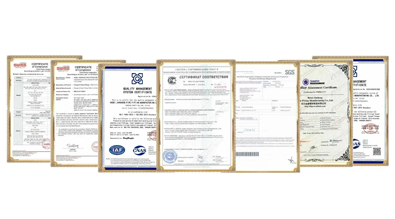
Welcome to RAYOUNG – Strong Pipes, Stronger Promise
